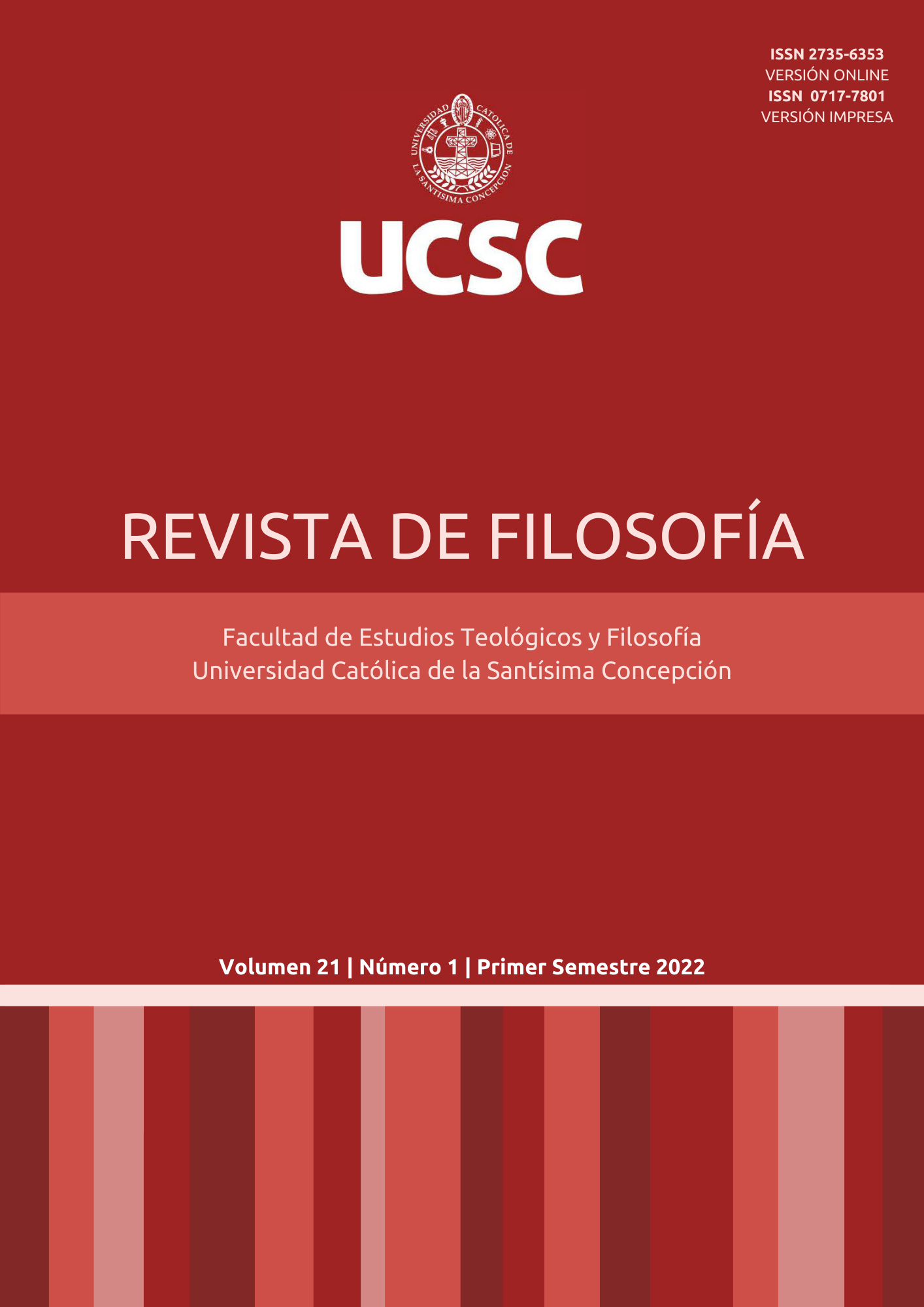The origin of the world: a random adaptation or an intelligent design. A look from the fifth way of Thomas Aquinas
Main Article Content
Abstract
This article examines the fifth way of Thomas Aquinas, in dialogue with two theories of the origin of the universe: the one that asserts that everything arises from chance and adaptation, and the one that affirms, from biology, that it is possible to accept intelligent causes in nature, given very specific and complex organs found in it. The latter position is better in line with the fifth way than the former, although there are followers of Thomas Aquinas who admit moderate evolution, that is, one that does not involve the transformation of one species into another.
Article Details
Section

This work is licensed under a Creative Commons Attribution-NonCommercial 4.0 International License.
The Revista de Filosofía UCSC is an open access journal and does not charge for publication. In addition, it regulates its Copyright and access policy according to the Creative Commons Attribution-NonCommercial 4.0 International Public License (CC BY-NC 4.0), therefore sharing (reproducing and distributing the material in any medium or format) and adaptation (modifying, transforming, and creating from the material) is allowed as long as proper credit is given and the citation is included with the corresponding data. Moreover, it is not allowed to use the material for commercial purposes.
How to Cite
References
Artigas, M. (1992). La inteligibilidad de la naturaleza. Eunsa.
Artigas, M. (1999). La mente del universo. Eunsa.
Artigas, M. (2008). “¿Hay un sentido en el universo?”, Anuario Filosófico de la Universidad de Navarra, 16(3), 549-575.
Ayala, F. (2016). En el centenario de Darwin. Ludus Vitalis, 17(32), 1-16.
Aznar, J. (2016). El origen del universo y la existencia de Dios. SCIO: Revista de Filosofía, (12), 179-200.
Barbés, A. (2015). El argumento de diseño y la quinta vía de Santo Tomás, Scientia et Fides, Universidad Nicolás Copérnico de Torun, Polonia, 3(2), 119-120.
Carrol, W. (2002). La creación y las ciencias naturales. Actualidad de Santo Tomás de Aquino. UC.
Casadesús, R. (2019). La big history como síntesis de la cosmo-bio-antropo-evolución: Comienzo del Universo y emergencia de la vida. Pensamiento, 75(283)
Castro, I. y Abrantes, P. (2018). Imágenes en la explicación del comportamiento prosocial humano y su evolución. Revista Colombiana de Filosofía de la Ciencia, 18(37), 239-271.
Collado, S. (2007). “Análisis del diseño inteligente”, Scripta Theologica, Universidad de Navarra, 39(2), 573-605.
Forment, G. (2008). Santo Tomás de Aquino: su vida, su obra y su época. Biblioteca de Autores Cristianos.
Gilson, E. (1961). Pintura y realidad. Aguilar.
Gilson, E. (1980). De Aristóteles a Darwin y vuelta. Ensayo sobre algunas constantes de la Biofilosofía. Eunsa.
Ibáñez, M. (2018). Darwin y el origen de las especies: teorías evolucionistas ayer y hoy. Ambiociencias, (monográfic.), 30-32.
Laguna, R. (2016). De la máquina al mecanicismo. Breve historia de la construcción de un paradigma explicativo. Revista Colombiana de Filosofía de la Ciencia, 16(32).
Lombardi, A. M. (2019). Vuelta a una ontología trinitaria. Persona y Trinidad en Ser finito y ser eterno de Edith Stein. Veritas, (43), 89-106.
Lombardo, R. (2019). La teoría de la evolución y la Iglesia Católica. Ludus Vitalis, 10(17), 111-122.
Lobato, A. (1965). Ser y belleza. Herder.
Aquino, T. (2007). Suma Contra Gentiles. Biblioteca de Autores Cristianos.
Aquino, T. (2010). Suma Teológica. Biblioteca de Autores Cristianos.
Ossandón, J. (2014). La teoría de la evolución. ¿Ciencia o filosofía? Inie.
Solano, R., Caso, J., & Ramírez, R. (2018). El programa de Lamarck: una visión materialista de la vida. Metatheoria–Revista de Filosofía e Historia de la Ciencia, 8(2), 147-156.
Vicente, L. (1981). El problema de la finalidad. Facultad de Filosofía y Ciencias de la Educación, Universidad Complutense de Madrid.
Zardoya, R., Sánchez-Gracia, A., & Rozas, J. (2017). Filogenómica y genómica de la adaptación. Boletín de la Sociedad Española de Bioquímica y Biología Molecular, 194, p. 9-14.




